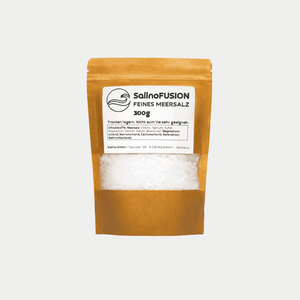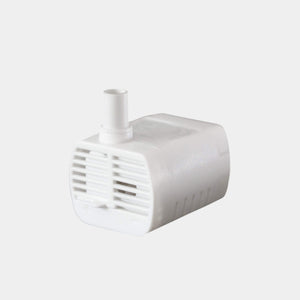Between incense and salt air – Kevelaer breathes differently
Kevelaer – for many, a synonym for pilgrims, faith, and quiet devotion. But beyond the candlelight and band singing, there's a quiet revolution here that hardly anyone knows about – one that starts through the nose and reaches deep into the lungs.
Something has changed in the heart of the Lower Rhine plain: people no longer come just for the image of the Virgin Mary, but also for the air. For the way it tastes. How it feels. How it heals.
The term "Kevelaer Airway" has been circulating among medical professionals and in waiting room conversations for some time now. What initially sounds like a poetic expression is actually a phenomenon considered across disciplines—a blend of microclimatic peculiarities, therapeutic practice, and a gentle promise: You can breathe freely again.
In this article, we delve deep into what makes the Kevelaer airway so special—geographically, health-wise, and atmospherically. We examine its origins, its effect on the body and mind, and what it can mean—both figuratively and literally—in a time of constant breath-holding.
A place that catches its breath
How a place of pilgrimage became a place of respiration
Kevelaer has a long history. Pilgrimages have been taking place here since the 17th century. But in recent decades, a quiet shift has begun to take place between devotion and tourism. More and more people are traveling here not just for their faith, but for their health. For the fresh air.
The idea of an "airway" first arose casually. Walkers along the forest paths noticed they were breathing more freely. Rehabilitation clinics reported successes with patients suffering from COPD, asthma, and chronic bronchitis. A regional health resort initiative began investigating the connection – and discovered a fascinating constellation of nature, infrastructure, and human experience.
What is now known as the "Kevelaer Respiratory Path" is not a single road or signposted route. It is a loosely connected network of paths, forests, therapy rooms, graduation towers, and small retreats that together do one thing: allow people to breathe deeply.
Nature as a player
 A central component of this phenomenon is Kevelaer's microclimate. In the area surrounding the salt garden, interspersed with moist meadows, gentle wind currents, and ancient trees, mild humidity with elevated salinity develops—especially near the graduation tower.
A central component of this phenomenon is Kevelaer's microclimate. In the area surrounding the salt garden, interspersed with moist meadows, gentle wind currents, and ancient trees, mild humidity with elevated salinity develops—especially near the graduation tower.
The effect is noticeable: The inhaled air is less polluted with pollen, suspended particles, or urban particulate matter. For many people, it acts like a softener for the respiratory tract—soothing, expectorant, and calming.
This is accompanied by a soundscape that also contributes to relaxation: the rippling of the graduation tower's watercourses, the rustling of the trees, the distant ringing of a church bell. The body relaxes, the lungs open. Those who walk here regularly soon realize: you're not just taking a walk—you're regenerating.
The science behind the feeling
What salty air does to the body
What many feel can also be measured. Numerous studies, including those by the German Allergy and Asthma Association and the Lung Information Service, confirm the positive effects of saline inhalation and salty air on the respiratory system.
Aerosol therapy—inhaling ultrafine salt particles—relieves mucous membrane irritation, improves the effectiveness of the cilia in the bronchi, and helps loosen trapped mucus. This can provide tremendous relief, especially for conditions such as chronic bronchitis, bronchial asthma, or COPD.
What's unique to Kevelaer: Here, this effect doesn't come from a laboratory device, but from the surrounding environment. The proximity to the graduation tower in the St. Jakob saltwater garden creates a natural inhalation field – comparable to those on the North Sea or Baltic Sea, but without the travel effort.
When combined with exercise—for example, walking slowly along the "breathing islands"—a more profound effect occurs: the breathing rate decreases, breathing deepens, and the autonomic nervous system calms down. For people with respiratory diseases, this isn't just relaxation—it's a form of therapy.
Between body and psyche
What is often overlooked: The lungs are not just an organ that transports oxygen—they are closely linked to our nervous system. People who breathe poorly live in a state of alarm. Conversely, free breathing can promote a feeling of security, serenity, and inner space.
The Kevelaer Airway therefore not only affects the bronchi, but also affects the inner experience. Many report better sleep, a calmer heartbeat, and less stress after a walk. Especially in our times—characterized by air pollution, sensory overload, and breathlessness in the figurative sense—this is invaluable.
Encounters with the breath
 Voices that remain
Voices that remain
Sometimes it's not numbers or studies, but encounters that define a place. In Kevelaer, you find them everywhere: people with inhalers in their pockets, couples marching in step through the saltwater garden, seniors practicing breathing exercises on one of the benches.
Take Mr. M., a retiree from Duisburg, who has been traveling to Kevelaer every two weeks since his COPD diagnosis. He says, "I breathe deeply here, literally. At home, I need my inhaler – here, I often don't." Or the mother with her child, who suffers from croup. "The air here is softer," she says, "my son hardly coughs when we're here."
Such stories aren't medical evidence. But they are valuable experiences. They give the "Kevelaer Airway" a face—many faces. Each of them a testament to the quiet power that air can emanate.
Breathing as a daily companion
In Western medicine, breathing was long overlooked—as something that simply happens. Only in recent years has it received the attention it deserves. Not only in physical therapy, but also in psychology, sports, and pain management.
The "Kevelaer Breathing Path" is more than just a geographical location—it's also an invitation to mindfulness. Those who walk here regularly develop a new relationship with their own breath: It becomes more noticeable, more present. And with it, a sense of control grows over what otherwise often happens automatically.
Some experts now recommend breathing walks, guided breathing exercises outdoors, or silent breathing pauses. What sounds simple has measurable effects: Just a few minutes of deep abdominal breathing in salty air can reduce inflammatory processes and stimulate the immune system—an underestimated preventive factor, according to studies by the Lung Information Service and the WHO.
A path that gets under your skin
 The "Kevelaerer Atemweg" is not a product, not a project, not a PR brand. It has grown – from air, from salt, from stories. And from a collective need that is becoming increasingly urgent in our time: the desire to breathe freely again.
The "Kevelaerer Atemweg" is not a product, not a project, not a PR brand. It has grown – from air, from salt, from stories. And from a collective need that is becoming increasingly urgent in our time: the desire to breathe freely again.
Kevelaer demonstrates that a place can be more than its history—it can become a resonating space for health and humanity. The blend of natural microclimate, targeted exercise, salty air, and therapeutic support offers many people a kind of second lung. A place of retreat that doesn't cut them off, but opens them up.
In a society where breathlessness often becomes the norm—due to stress, environmental pollution, or illness—places like this are needed. Places where we remember what once seemed natural: taking a deep breath, without feeling confined.
A possible addition – for home
Not everyone can come to Kevelaer regularly. For many who want to benefit from the positive effects of salty air, there are now technical aids available for everyday use. One of these is the so-called Mini-Saline – a compact device that uses innovative technology to create a high salt content in the room air.
Especially at night or during quieter periods of the day, it can help relieve the respiratory tract – similar to a walk along a graduation tower. No filter changes, no background noise. It's not a miracle solution, but it offers quiet support for people with chronic complaints, allergies, or simply those who simply want to breathe more freely.



